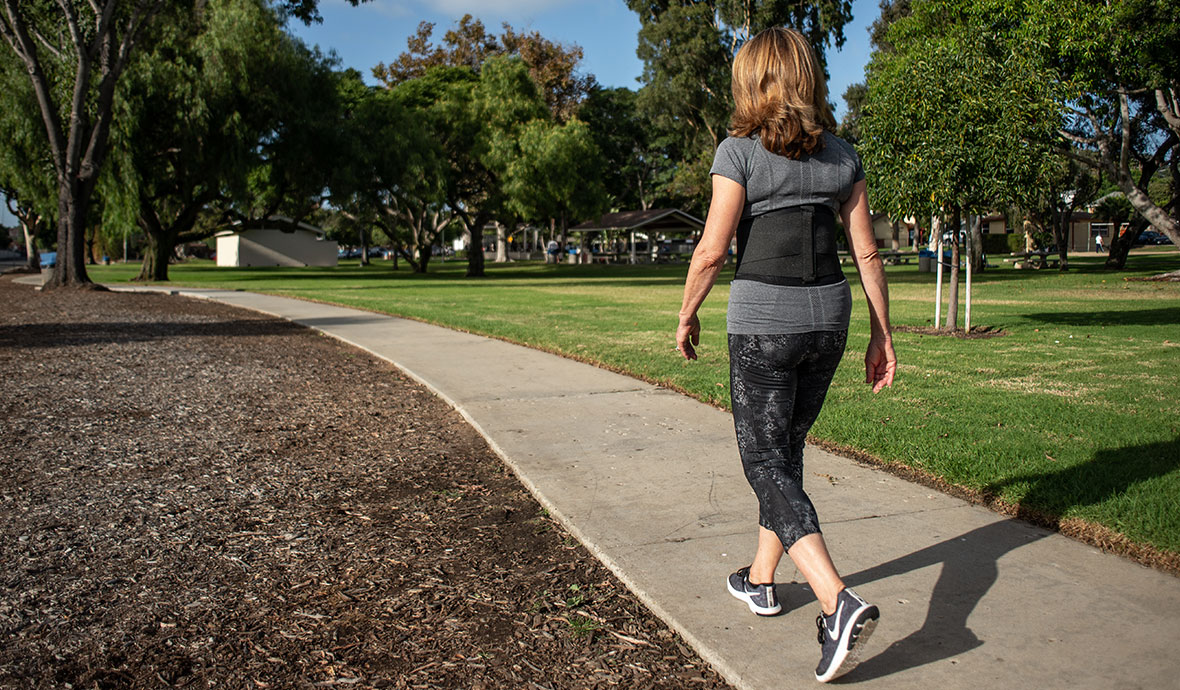Staying active while at home offers so many benefits, from helping you stay physically fit and mentally focused to boosting your mood and improving your sleep. If you spend much of your day sitting or standing, especially if your posture is incorrect, you may find that your back muscles start to feel tight, sore or weak. Plus, looking at a computer screen or mobile device for extended periods can strain your neck and upper back. Taking regular activity breaks throughout the day can keep your back muscles strong, flexible and less prone to injury.
It’s not surprising that back pain is one of the most common reasons for physician visits. Your back supports your entire upper body and helps you move, twist and bend. Your spine consists of bony structures called vertebrae which are cushioned by spongy discs of cartilage and connected to nerves that travel throughout your body. The muscles in your back connect with your neck, shoulders and hips.
Low back pain affects nearly every American at some point in their lives
Damage to any of these parts can cause pain, but the lower back is particularly vulnerable. Low back pain affects nearly every American at some point in their lives and can be caused by a range of factors including heavy or improper lifting, poor posture, overuse, accidents and sports injuries. Adults younger than 60 are more likely to suffer low back pain from ruptured or injured (herniated) discs, or strained back muscles or tissues. In older adults, pain is more often due to “wear-and-tear” damage caused by osteoarthritis or increasing age.
Treating back pain at home
If your back pain is mild, you can take steps at home to help relieve discomfort and give your back time to recover. Try these home care tips:
- Cold therapy: Apply ice or other cold therapy to the painful area for 20-30 minutes several times a day. Don’t apply ice directly to the skin; wrap the ice in a towel or pad.
- Keep moving: While you may be tempted to stop all activity and let your back rest, it’s better to move around throughout the day. Walking, yoga and gentle stretching can help with recovery. Avoid high-impact activities, bending, twisting or any activity that is painful.
- Massage: Gentle massage of strained or tight muscles can help increase circulation and relieve pain.
If your pain is severe, does not improve within a few days or becomes worse, consider contacting your physician for a “virtual visit” by online video or phone.
 ProCare® ComfortFORM™ Back
ProCare® ComfortFORM™ Back
Support your back with a brace
Try wearing a back brace to support and help protect your back as you recover. DJO offers a variety of bracing types to meet your specific needs including:
- Compression: Compression wraps keep strained muscles warm, providing support and mild stabilization aid during activity.
- Posture support: Incorrect posture can aggravate upper and middle back pain and lead to further injury. A postural support brace gently holds the shoulders back to help improve posture.
- Lumbar support: Lumbar belt braces support and help protect the lower back with compression and stabilization.
Go out and play*
As your back improves, explore ways to stay active close to home. Yardwork, house projects and playing catch with the kids are a few ways to keep moving during the day and ward off back stiffness. Follow these tips to help stay injury-free:
- Remember to lift heavy objects properly by using your legs instead of your back (or better yet, have someone help you).
- Practice proper posture when sitting or standing. Avoid slouching, pull in your abdominal muscles, keep your shoulders square and your head in line with shoulders.
- If you work at a desk, use an ergonomically correct chair with lumbar support. Adjust your chair so your feet are flat and knees are bent at 90° and level with or slightly below your hips.
- Strengthen your back and core muscles with exercises such as this one: Lie on your stomach. Tighten the muscles in one leg and raise it about two inches from the ground. Switch legs and repeat. Do 20 lifts with each leg.
Back braces can provide stability and support, as well as help protect your back from injury during activities. Let us help you find the right brace for your back at a DJO select retailer or online at Better Braces. Use the Brace Advisor or chat with one of our experts.